|
Alishan National Scenic Area is one of the most famous mountain areas in Taiwan (aka Mount Ali, or Ali Mountain). Formerly a timber harvesting area during the Japanese Era, it still has a working rail system for park visitors to ride around the mountain. The mountain villages, ancient forests, waterfalls, hiking destinations, and tea plantations have made it a popular destination for tourists. It is also a popular destination to see the sunrise over a sea of clouds. Overall, it is one of the most iconic and well known mountain destinations in Taiwan.
Brief Background: Alishan is a high mountain area over 2,000 meters above sea level in central Taiwan. The first settlers in the Alishan region were the Tsuo aboriginal tribe. Chinese settlers did not move into the area until the 1900s. After the Japanese took over Taiwan in the late 1800s, they discovered large quantities of cypress trees in the area and sought to harvest them. They built railways in order to transport lumber down the mountains, part of which stands today as the Alishan Forest Railway. By 1970 logging resources had been depleted and the area began to rely on tourism as the major economic driver in the area. High mountain tea and wasabi are also major industries in there. The Alishan highway was completed in 1980, which made the surrounding area more accessible for tourism. In 2001, the Alishan National Scenic Area was officially established. The railway was damaged in 2009 by typhoon Morakat but was reopened again in 2014, and is currently running as of 2018. Hours: Open 24-hours a day all year round (so you can go to see the sunrise at 3 AM). Recreation Area Price: 300 NT for foreigners, 200 NT for Taiwan nationals. Parking is 100 NT for cars and 20 NT for scooters. You can book tickets to Alishan Forest Recreation Area for a discount on Klook here. Online: you can purchase tours and tickets of the Alishan Railway through Klook here or KKday here. Accommodation: We have stayed at and recommend Chiayi Crown Hotel (you can book on Agoda here, Booking.com here, Hotels.com here, or Expedia here), Shin Kao Hotel (you can book on Agoda here or Trip.com here), and YesHotel (you can book on Agoda here, Booking.com here, Hotels.com here, or Expedia here), which are all quality hotels for a reasonable price near Chiayi Station. We also recommend Shianghu Botique Hotel (you can book on Agoda here, Booking.com here, Hotels.com here, or Expedia here), with excellent quality for the money just our of Chiayi City center. Finally we have stayed at and recommend Fenchihu Street Hotel (you can book on Agoda here, Booking.com here, Hotels.com here, or Expedia here), which is within walking distance of Fenqihu Old Street, Fenqihu Station, and many amazing hikes in the area. Find out more about where to stay in our Taiwan hotels guide or search for the best hotel deals in Taiwan here. We recommend booking through Agoda here, which provides the best quality selection of accommodation on the islands. You can also book Wifi and SIM cards for Taiwan on Gigago here. Need travel insurance? Compare prices on Insubuy here. Just to let you know, if you book using the links above, we get some commission at no cost to you, and you can help support our blog. You can click here to receive $5 USD on your first Klook purchase. How to get There: The best way to get to Alishan is from Chiayi. There are a number of transportation options. By Train: You have to book the tickets the day before and they have been known to sell out. For more information on how to book train tickets up the mountain check out this blog by Travel Taiwan. Book tickets via the normal train (TRA) on Klook here. You can purchase tours and tickets of the Alishan Railway through Klook here or KKday here. By Bus: King Bus goes directly to Alishan from Taipei Main Station but this bus leaves early and is expensive. You can also take a bus from Chiayi Main Bus station. You can book tickets to travel to Chiayi via inter-city bus on Klook here. By Car/Scooter: Take provincial Highway 18 east out of Chiayi City, then make your way up the mountain for about over an hour until you reach Alishan Scenic Area. If your GPS tells you to go up the one lane roads to Alishan, do not. For safety, stay on the two lane Highway 18. The road to Alishan is known to often have thick fog. You do not want to be stuck on a super steep one lane road with thick fog, so stay on the main two-lane highway. You can rent a scooter for cheap in front of the Chiayi Train Station. I would suggest getting at least a large 125 cc scooter that can make it up the mountain. Some rental shops do not even require to see a license. Also be aware there is a gas stations in the first town up the mountain road, so make sure you fill up there if you are getting low. Getting to Alishan could take most of your gas tank. Looking for scooter rental in Chiayi? You can check out Klook here or KKday here to search for options. You can also check out our scooter rental guide here. If you are looking for car rentals, you can also search Qeeq here, Klook here, or KKday here. You can also check out our car rental guide here. Bicycle Rental: Looking for bicycle rentals in Taiwan? You can search on KKday here and search for tours on Klook here. You can also check out our Taiwan cycling guide here. Map: please see below
3 Comments
Alishan Forest Railway is one of the most iconic and best preserved historical mountain railways in the world. Starting at the center of Chiayi City, it passes through tropical forests, subtropical hills, and rising into the temperate forests in the mountains, originally ending up at Alishan. It is definitely something you should experience while you are in Taiwan.
Historical Background: The Alishan forest railway was opened in 1912 during the Japanese occupation of Taiwan. Originally it was built to transport lumber from mountain areas in Chiayi County, especially cypress and Taiwania wood. The railway consists of narrow gauge track, and has 50 tunnels and70 wooden bridges. After the Alishan highway was completed in 1982 and logging in Taiwan was banned, passengers along the railway dropped considerably. However, the railway has become popular again in recent years due to its unique and historic preservation. Before the railway from Fenqihu to Zhuqi station was opened, passengers had to disembark at Fenqihu to take a bus to Alishan. In recent years, many parts of the railway have been damaged by floods and landslides, closing parts of the railway for days or even years. As of July 6th, 2024, the entire railroad from Chiayi to to Alishan finally opened in its entirety, after sections of the entire line had been closed for nearly 15 years. The railway is known as one of the most beautiful mountain railways in the world. It is also the highest narrow-gage railway in Asia at 2,451 meters (Chushan Station). Currently the railway attracts visitors from all over the world and is one of the most popular attractions in Taiwan. Hours: Chiayi to Alishan: First train leaves Chiayi at 8:30 AM Last train leaves Chiayi at 9:00 AM Trains return to Chiayi at around 3:00 PM - 4PM A one way trip takes about two and a half hours. Zhushan: 30 minutes (sunrise train) Shenmu: 7 minutes Zhaoping Line: 6 minutes You can purchase tours and tickets of the Alishan Railway through Klook here or KKday here. Price: 600 NT one way from Chiayi to Alishan. Zhushan Line: 150 NT per ride Shenmu Line: 100 NT per ride Zhaoping Line: 100 NT per ride You can purchase tours and tickets of the Alishan Railway through Klook here or KKday here. How to Buy Tickets: Online: you can purchase tours and tickets of the Alishan Railway through Klook here or KKday here. You can use the online system to buy tickets here. In person: Go to Chiayi Station in person for the Chiayi-Shizilu portion, or Alishan Station for the Zhushan, Shenmu, and Zhaoping lines. The counter to buy tickets is on the right of the main entrance. This is the best way to buy tickets. The online system does not show all tickets and routes available, so if possible it is better to buy in person instead. Where to sit: The best views going up are on the right of the train, and coming down on the left of the train. When to go: Any season. Spring is special because of Cherry blossoms. In the summer (May-October), rock falls due to heavy rains or Typhoons can stop the train for a few days. Make sure to check the train is still running before you go in the summer. Stations: We will cover the following stations in this blog: Chiayi Station 嘉義車站 Beimen 北門站 Lumachan 鹿麻產 Zhuqi 竹奇 Zhangnaoliao 樟腦寮 Dulishan 獨立山 Liyuanliao 梨園寮 Zhaoliping 交力坪 Shuisheliao 水社寮 Fenqihu 奮起湖 Duolin 多林 Shizilu 十字路 First Switch 第一分道 Second Switch 第二分道 Erwanping 二萬平 Shenmu 神木 Alishan 阿里山 Zhaoping 沼平 Shizifendao 十字分道 Dueigaoyue 對高岳 Chushan 祝山 Mian Yue/Tashan Line 眠月線/塔山線 Dongpu Line 東埔線 Shuishan Line 水山線 How to get there: Most passengers board from Chiayi TRA Station or the nearby Beimen TRA Station. Go to Alishan Station for the Zhushan, Shenmu, and Zhaoping lines. You can book tickets to travel to Chiayi via inter-city bus on Klook here. You can book tickets to Chiayi via high speed rail (HSR) on Klook here or KKDay here. Book tickets via the normal train (TRA) on Klook here. Scooter Rental: Looking for scooter rental in Chiayi? You can check out Klook here or KKday here to search for options. You can also check out our scooter rental guide here. Car Rental: If you are looking for car rentals, you can also search Qeeq here, Klook here, or KKday here. You can also check out our car rental guide here. Bicycle Rental: Looking for bicycle rentals in Taiwan? You can search on KKday here and search for tours on Klook here. You can also check out our Taiwan cycling guide here. Tours and Activities: You can purchase tours and tickets for many activities in Chiayi such as glamping, Three Pigs Farm, Janfusun Fancy World, Taiping Suspension Bridge, Chateau de Jourdeness , Kumquat Tourist Factory, Taisugar Siantou Cultural Park, Meteor Garden, Veoveoana Tribe Tour, Danayi Valley, Batongguan Historic Trail, Xianghe Leisure Farm, Foot massage and many others through Klook here or KKday here. Accommodation: We have stayed at and recommend Chiayi Crown Hotel (you can book on Agoda here 喔Booking.com here), Shin Kao Hotel (you can book on Agoda here or Trip.com here), and YesHotel (you can book on Agoda here or Booking.com here), which are all quality hotels for a reasonable price near Chiayi Station. We also recommend Shianghu Botique Hotel (you can book on Agoda here, Booking.com here), with excellent quality for the money just our of Chiayi City center. Finally we have stayed at and recommend Fenchihu Street Hotel (you can book on Agoda here or Booking.com here), which is within walking distance of Fenqihu Old Street, Fenqihu Station, and many amazing hikes in the area. Find out more about where to stay in our Taiwan hotels guide or search for the best hotel deals in Taiwan here. We recommend booking through Agoda here, which provides the best quality selection of accommodation on the islands. You can also book Wifi and SIM cards for Taiwan on Klook here or KKday here. Maps: Please see a map of all the stations below:
Chiayi is a mostly rural county in south-central Taiwan. Despite its relatively small population compared to other counties in Taiwan, it has some of the most beautiful scenery, delicious local food, and interesting history. Come for Alishan, and stay for everything else you find along the way.
Below I will list out some of the best places in Chiayi that I have visited. I will be sure to update this blog as I visit more places later. How get to Chiayi? You can book tickets to travel to Chiayi via inter-city bus on Klook here. You can book tickets to Chiayi via high speed rail (HSR) on Klook here or KKDay here. Book tickets via the normal train (TRA) on Klook here. How to get around in Chiayi? As always, we recommend renting a scooter as the best way to see Taiwan. However, you can also a great deal of Chiayi by taking the TRA train, Alishan Forest Railway, inter city bus, or local bus. Getting around in a car is also a convenient option as there is plenty of parking pretty much everywhere in this less crowded county. Scooter Rental: Looking for scooter rental in Chiayi? You can check out Klook here or KKday here to search for options. You can also check out our scooter rental guide here. Car Rental: If you are looking for car rentals, you can also search Qeeq here, Klook here, or KKday here. You can also check out our car rental guide here. Bicycle Rental: Looking for bicycle rentals in Taiwan? You can search on KKday here and search for tours on Klook here. You can also check out our Taiwan cycling guide here. Train / Bus: You can purchase tours and tickets of the Alishan Railway through Klook here or KKday here. Book tickets via the normal train (TRA) on Klook here. Tours and Activities: You can purchase tours and tickets for many activities in Chiayi such as glamping, Three Pigs Farm, Janfusun Fancy World, Taiping Suspension Bridge, Chateau de Jourdeness , Kumquat Tourist Factory, Taisugar Siantou Cultural Park, Meteor Garden, Veoveoana Tribe Tour, Danayi Valley, Batongguan Historic Trail, Xianghe Leisure Farm, Foot massage and many others through Klook here or KKday here. Accommodation: We have stayed at and recommend Chiayi Crown Hotel (you can book on Agoda here, Booking.com here, Hotels.com here, or Expedia here), Shin Kao Hotel (you can book on Agoda here or Trip.com here), and YesHotel (you can book on Agoda here, Booking.com here, Hotels.com here, or Expedia here), which are all quality hotels for a reasonable price near Chiayi Station. We also recommend Shianghu Botique Hotel (you can book on Agoda here, Booking.com here, Hotels.com here, or Expedia here), with excellent quality for the money just our of Chiayi City center. Finally we have stayed at and recommend Fenchihu Street Hotel (you can book on Agoda here, Booking.com here, Hotels.com here, or Expedia here), which is within walking distance of Fenqihu Old Street, Fenqihu Station, and many amazing hikes in the area. Find out more about where to stay in our Taiwan hotels guide or search for the best hotel deals in Taiwan here. We recommend booking through Agoda here, which provides the best quality selection of accommodation on the islands. You can also book Wifi and SIM cards for Taiwan on Gigago here. Need travel insurance? Compare prices on Insubuy here. Just to let you know, if you book using the links above, we get some commission at no cost to you, and you can help support our blog. You can click here to receive $5 USD on your first Klook purchase. Map: You can see a map of all the places that we will visit in this blog below:
This month marks the 10th anniversary of this blog, so to celebrate I am making a blog tracing back our first round-island trip lasting 14 days and 13 nights made in 2014. During this journey we rented a car in Taipei, and circled Taiwan clockwise, visiting Taroko Gorge, Kenting, Xiaoliuqiu, Alishan, Sun Moon Lake, and many more places along the way. I am the kind of guy who likes to bask in nostalgia, but also I hope that laying out this experience in the open as well as the lessons we learned about travel in Taiwan along the way (and what I know now in 2024) will be helpful to other foreigners coming to Taiwan.
Some background on why this trip happened: This was not our first trip to Taiwan. Scott and I had been Latter-day Saint missionaries in Taiwan from 2011 to 2012 in the Taichung Mission, which covers Taichung to Pingtung but nothing north or east of that. We still had a lot of friends in Taiwan that we missed, we missed Taiwanese food, and there were the entire north and east parts of the island for us to explore. We decided it would be a once-in-a-lifetime opportunity to tour Taiwan now because later on in our lives we would likely have work and family obligations that would not allow us to take a 14-day trip around Taiwan. Being poor college students at the time, we had a very limited budget (for reference, I was making 700 USD a month as a janitor and I could only save about half of that after rent and food). Originally another friend planned to come with us, but he backed out because he got married. Scott's brother Matt decided to come along too. Just so you know, Scott and I know Chinese, but Matt doesn't. It makes traveling easier to know the language but you can still get by in Taiwan without it. The Plane Ride: We took the cheapest flight available on Shenzhen Airlines, which had many flights for cheap to the US at the time. For 700 USD we bought a round trip from LA to Beijing to Taipei and back. Renting a car in Taiwan: Before we began our trip, we planned on rounding the island by Scooter. This can be a fun way to explore Taiwan. As a side note, you can book a Motorcycling experience on Klook here, or a half-day Motorbike Tour on KKday here. If you are looking for a multi-day, in-depth tour of Taiwan via motorbike, we recommend contacting [email protected] who schedules regular 10-day motorbike tours of Taiwan. The tour guide is a long-term expat in Taiwan who has been giving riding tours of Taiwan for 16 years now. You can also check out our scooter rental guide here. After crunching the numbers, we figured that we could rent a car for just as cheap as three scooters, and we wouldn't have to worry about rain or luggage. A scooter would be 300 NT per day, and for three people 900 NT per day, but we found a car rental place that would rent us a small Nissan March for 700 NT a day (that car company was called Good Cars 固得汽車 in Zhonghe, you can find their information in our Taiwan Car Rental Guide here). After arriving at Taoyuan International Airport, we took a bus to Taipei and made our way to Zhonghe at a friend's house and picked up the rental car. At the end of the trip, we found the price was a few thousand NT more than we expected because of highway tolls (about 1.5 NT per kilometer). SIM Card: I bought a pre-paid SIM card from Taiwan Mobile for 500 TWD that lasted the whole trip. I think it was only a few GB of data, but I had a crappy phone and was not using much data. Map: Check out a map of places we visited on this trip below:
Chukou Village in Fanlu Township (番路鄉) of Chiayi is a pleasant stop along the Alishan Highway, It features multiple suspension bridges, mountain temples, rivers and waterfalls, and lots of hikes. If you have time you should definitely stop here and enjoy the scenery.
Background: Fanlu gets its name from the Cou Tribe that named the area Fan Village, and was an important trading spot between Han Chinese settlers and indigenous tribes-people. Fanlu Township was briefly a part of Tainan county after WWII, but was moved back to Chiayi county in 1951. Currently it has 11,000 residents. When the Alishan Forest Railway is damaged, this placed becomes an important stop for many travelers along the Alishan Highway. Hours: 24/7 Price: Free Tours and Activities: You can purchase tours and tickets for many activities in Chiayi such as glamping, Three Pigs Farm, Janfusun Fancy World, Taiping Suspension Bridge, Chateau de Jourdeness , Kumquat Tourist Factory, Taisugar Siantou Cultural Park, Meteor Garden, Veoveoana Tribe Tour, Danayi Valley, Batongguan Historic Trail, Xianghe Leisure Farm, Foot massage and many others through Klook here or KKday here. Accommodation: We have stayed at and recommend Chiayi Crown Hotel (you can book on Agoda here, Booking.com here, Hotels.com here, or Expedia here), Shin Kao Hotel (you can book on Agoda here or Trip.com here), and YesHotel (you can book on Agoda here, Booking.com here, Hotels.com here, or Expedia here), which are all quality hotels for a reasonable price near Chiayi Station. We also recommend Shianghu Botique Hotel (you can book on Agoda here, Booking.com here, Hotels.com here, or Expedia here), with excellent quality for the money just our of Chiayi City center. Finally we have stayed at and recommend Fenchihu Street Hotel (you can book on Agoda here, Booking.com here, Hotels.com here, or Expedia here), which is within walking distance of Fenqihu Old Street, Fenqihu Station, and many amazing hikes in the area. Find out more about where to stay in our Taiwan hotels guide or search for the best hotel deals in Taiwan here. We recommend booking through Agoda here, which provides the best quality selection of accommodation on the islands. You can also book Wifi and SIM cards for Taiwan on Gigago here. Need travel insurance? Compare prices on Insubuy here. Just to let you know, if you book using the links above, we get some commission at no cost to you, and you can help support our blog. You can click here to receive $5 USD on your first Klook purchase. How to get there: By Car/Scooter: From Chiayi, take provincial highway 18 east until you reach the first switchbacks up the mountain. Chukou Village is at the base of the mountain; it's hard to miss. If you are looking for car rentals, you can also search Qeeq here, Klook here, or KKday here. You can also check out our car rental guide here. Looking for scooter rental in Chiayi? You can check out Klook here or KKday here to search for options. You can also check out our scooter rental guide here. By Bus: From Chiayi Bus Station, take bus 7216A to Chukou Station (about 1.5 hours). You can book tickets to travel to Chiayi via inter-city bus on Klook here. Map: Please see below:
Hinoki Village (aka Cypress Forest Life Village 檜意森活村 Guìyì sēnhuó cūn) is the largest group of Japaneses era buildings in Taiwan, with over 30 restored era wooden structures. Located in Chiayi City, it is a remnant of the logging industry that existed in Chiayi during the Japanese era. As one of the best preserved historical sites in Taiwan, it is definitely worth a stop on your trip to Chiayi.
Historical Background: Hinoki Village dates back to 1914 when the Japanese built the Alishan Forest Railway for exploitation of lumber in the mountains of Chiayi. The village acted as a residential area for loggers, lumber industry management, and dependents. The village included a building for top management, two buildings for management dependents, another four dormitories for dependents, a dormitory for single workers, a public bath house, and a hostel. After WWII, it became a residential area for the ROC's forestry bureau and their dependents. In 2005, many buildings were listed as historical buildings under protection. In 2009, the area was planned as one of Taiwan's six major city renovation projects. It took NT 400 million dollars and 4 years to complete. The renovation of the village was completed in 2013 and is now operated by the public. The village now contains 21 bookstores, restaurants, coffee and tea shops, and a farmers market. Hours: 10 AM to 6 PM Closed Mondays Price: Free Tours and Activities: You can purchase tours and tickets for many activities in Chiayi such as glamping, Three Pigs Farm, Janfusun Fancy World, Taiping Suspension Bridge, Chateau de Jourdeness , Kumquat Tourist Factory, Taisugar Siantou Cultural Park, Meteor Garden, Veoveoana Tribe Tour, Danayi Valley, Batongguan Historic Trail, Xianghe Leisure Farm, Foot massage and many others through Klook here or KKday here. Accommodation: We have stayed at and recommend Chiayi Crown Hotel (you can book on Agoda here, Booking.com here, Hotels.com here, or Expedia here), Shin Kao Hotel (you can book on Agoda here or Trip.com here), and YesHotel (you can book on Agoda here, Booking.com here, Hotels.com here, or Expedia here), which are all quality hotels for a reasonable price near Chiayi Station. We also recommend Shianghu Botique Hotel (you can book on Agoda here, Booking.com here, Hotels.com here, or Expedia here), with excellent quality for the money just our of Chiayi City center. Finally we have stayed at and recommend Fenchihu Street Hotel (you can book on Agoda here, Booking.com here, Hotels.com here, or Expedia here), which is within walking distance of Fenqihu Old Street, Fenqihu Station, and many amazing hikes in the area. Find out more about where to stay in our Taiwan hotels guide or search for the best hotel deals in Taiwan here. We recommend booking through Agoda here, which provides the best quality selection of accommodation on the islands. You can also book Wifi and SIM cards for Taiwan on Gigago here. Need travel insurance? Compare prices on Insubuy here. Just to let you know, if you book using the links above, we get some commission at no cost to you, and you can help support our blog. You can click here to receive $5 USD on your first Klook purchase. How to get there: By Train/Bus: The village is a short walk across the street from Chiayi Beimen (North Gate) Station. You can purchase tours and tickets of the Alishan Railway through Klook here or KKday here. By Car/Scooter: From Chiayi Station, turn north on County road 159 until you reach Beimen Station. The village is across the street from Beimen Station. There is free and paid parking on the street nearby. Looking for scooter rental in Chiayi? You can check out Klook here or KKday here to search for options.You can also check out our scooter rental guide here. If you are looking for car rentals, you can also search Klook here or KKday here. You can also check out our car rental guide here. Map: Please see below:
Fenqihu (aka Fenchihu) is a charming mountain village in Chiayi, and is the largest along the Alishan Forest Railway. It has two old streets that feature great food, such as the famous Fenqihu lunch box and jelly fig seed drink. You can also see many Japanese historical sights such as a shinto shrine, train station, and residences. Also nearby are many beautiful sights such as bamboo forests and hikes in nearby mountains. Fenqihu Old Street is also known as the Jiufen of Southern Taiwan. This place is is definitley worth a stop along the Alishan Forest Railway.
Historical Background: Fenqihu is a small settlement in Zhonghe Village of Zhuqi Township, Chiayi County, Taiwan (台灣嘉義縣竹奇鄉中和村奮起湖聚落). The village sits at 1,405 meters above sea level. The old street is about 500 meters long. The name Fenqihu comes from the name for "dustpan" (fenqi 畚箕) and "lake" (hu 湖). The name lake (hu 湖) means basin in Hakka. The village was originally created along the road to Alishan before the railway was built by Hakka Chinese settlers. As the Japanese harvested more and more lumber, the town began to grow. Fenqihu Station was finished in 1912 by the Japanese and was the largest intermediate station along the Alishan Forest Railway. It was also a stop for trains to add coal and water on the way up the mountain. It was also usually a noontime lunch stop for loggers riding the train, hence the Fenqihu lunchbox tradition started. Because of this, Fenqihu became a central gathering place along the Alishan Forest Railway. After the Alishan highway was completed in 1982, passengers along the railway dropped considerably. However, the railway has become popular again in recent years due to its unique and historic preservation. Before the railway from Fenqihu to Zhiqi station was opened, passengers had to disembark at Fenqihu to take a bus to Alishan. However, Fenqihu is still very popular even on weekends when the train is not running, thanks to the Alishan highway that brings busses and cars. Fenqihu Old Street is also known as the Jiufen of Southern Taiwan. Price: Free Hours: About 9 AM to 6 PM Tours and Activities: You can purchase tours and tickets of the Alishan Railway through Klook here or KKday here. Accommodation: We have stayed at and recommend Fenchihu Street Hotel (you can book on Agoda here, Booking.com here, Hotels.com here, or Expedia here), which is within walking distance of Fenqihu Old Street, Fenqihu Station, and many amazing hikes in the area. Find out more about where to stay in our Taiwan hotels guide or search for the best hotel deals in Taiwan here. We recommend booking through Agoda here, which provides the best quality selection of accommodation on the islands. You can also book Wifi and SIM cards for Taiwan on Gigago here. Need travel insurance? Compare prices on Insubuy here. Just to let you know, if you book using the links above, we get some commission at no cost to you, and you can help support our blog. You can click here to receive $5 USD on your first Klook purchase. How to get there: By Car/Scooter: From Chiayi, taken provincial highway 18 east up the mountain to Shizhuo (石桌), after which you need to turn left up the mountain to Fenqihu. The town is hard to miss. Looking for scooter rental in Chiayi? Click here or here to search for options. You can also check out our scooter rental guide here. If you are looking for car rentals, you can also search here. You can also check out our car rental guide here. By Bus: Take the direct bus from Chiayi Station (leaves in the morning). You can book tickets to travel to Chiayi via inter-city bus on Klook here. By Train: Take the Alishan Forest Train from Chiayi Station (leaves at 8:30 AM and 9 AM). You can book tickets to Chiayi via high speed rail (HSR) on Klook here or KKDay here. Book tickets via the normal train (TRA) on Klook here. By Bicycle: Cycling is the best way to enjoy Taiwan's landscapes if you have the time and energy. Looking for bicycle rentals in Taiwan? You can search on KKday here and search for tours on Klook here. You can also check out our Taiwan cycling guide here. Map: Please see below: On Sunday we made our way up to Alishan (Mount Ali 阿里山). It was a very long ride, with windy roads and lots of fog. At the Alishan park were some shops, with decently priced food, and a train that went around the mountain. We took the train over to see that sacred tree when we were once again confronted with hundreds of Chinese tourists taking pictures of everything. The forest was definitely pretty, and there were some huge trees; it was kind of similar to the redwood forest, but there were only a handful of big trees. There was also a peaceful pond (姊妹潭) there that we relaxed at. The shops there were ridiculously overpriced, but among them we found some delicious wasabi peanuts. We took the train back around the mountain, which we still had to pay for (100-200NT), and had some decent fried rice at one of the restaurants. Then we made our way back down the mountain toward Nantou. On the way down, we tried to take a shortcut down a narrow road, but the fog would only let me see like ten feet in front of us, so I decided to turn back and take the main road where I knew there were at least two lanes. The rest of the way to Nantou went smoothly, and we were able to stay at a friend’s house.
|
Author 作家I am an American expat who has extensive experience living, working, and traveling in Taiwan. In my day, I had to learn many things about Taiwan the hard way. But I have come to learn that Taiwan is one of the best places in the world for Foreigners to live. This blog does not represent the opinions of every foreigner in Taiwan. I am just trying to help others learn more about this beautiful country. Categories
|


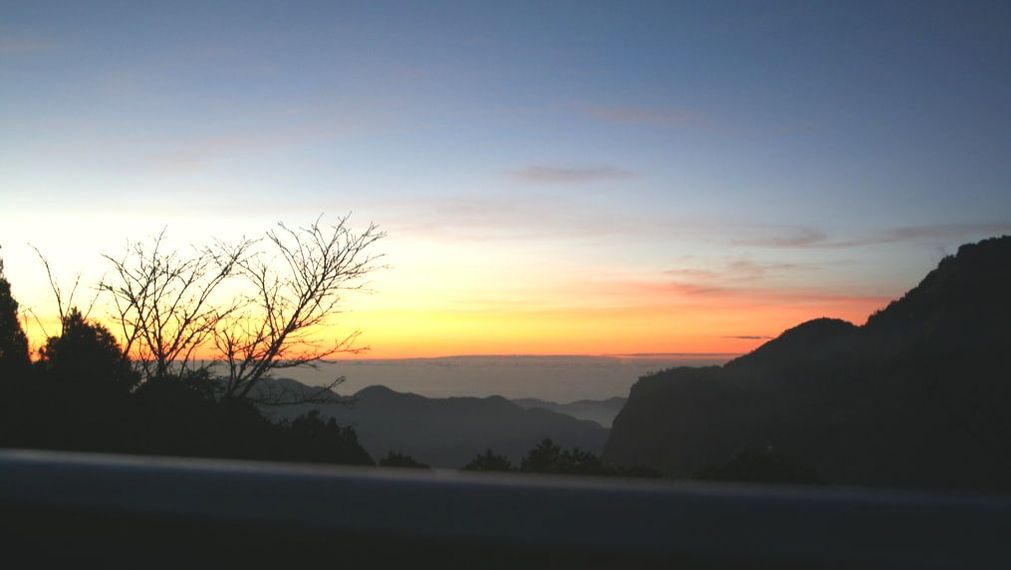
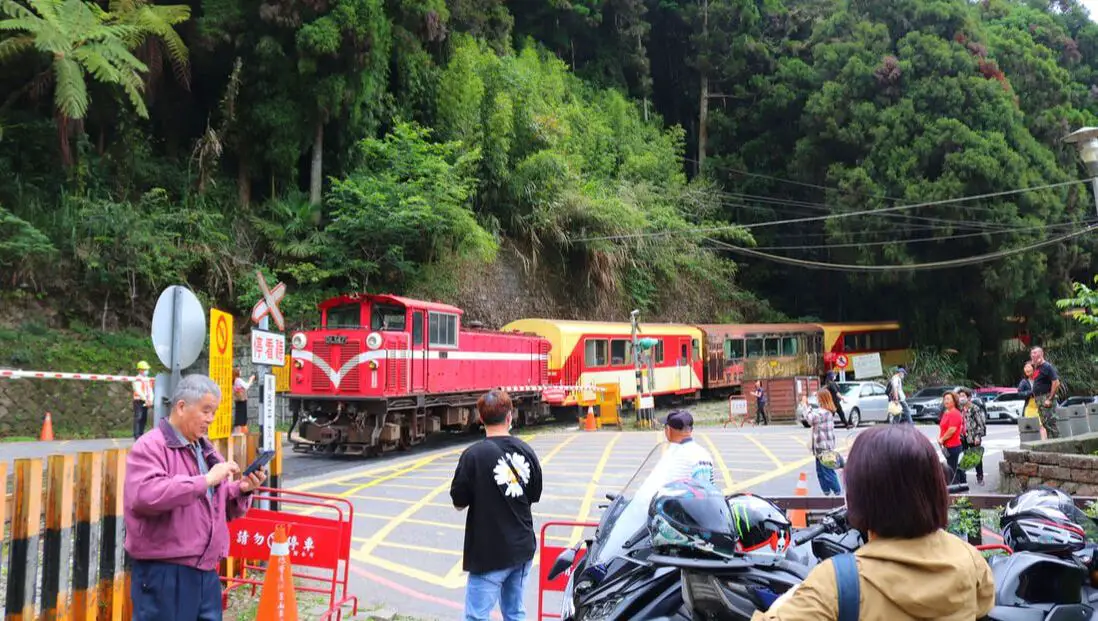
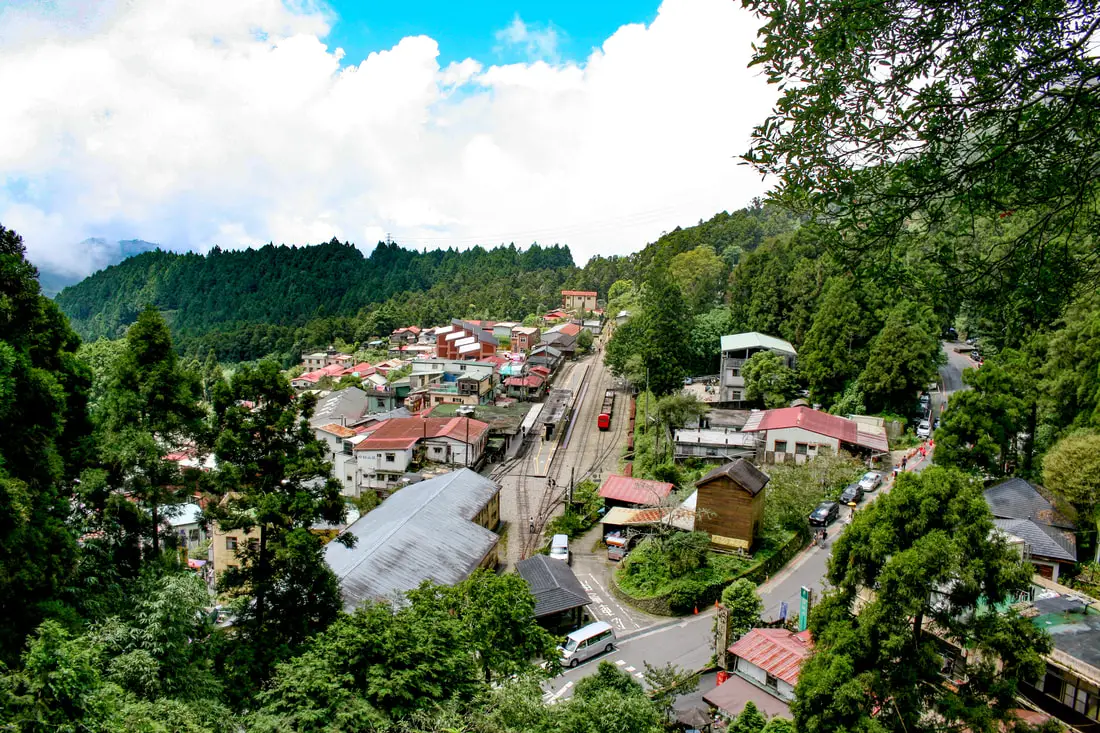

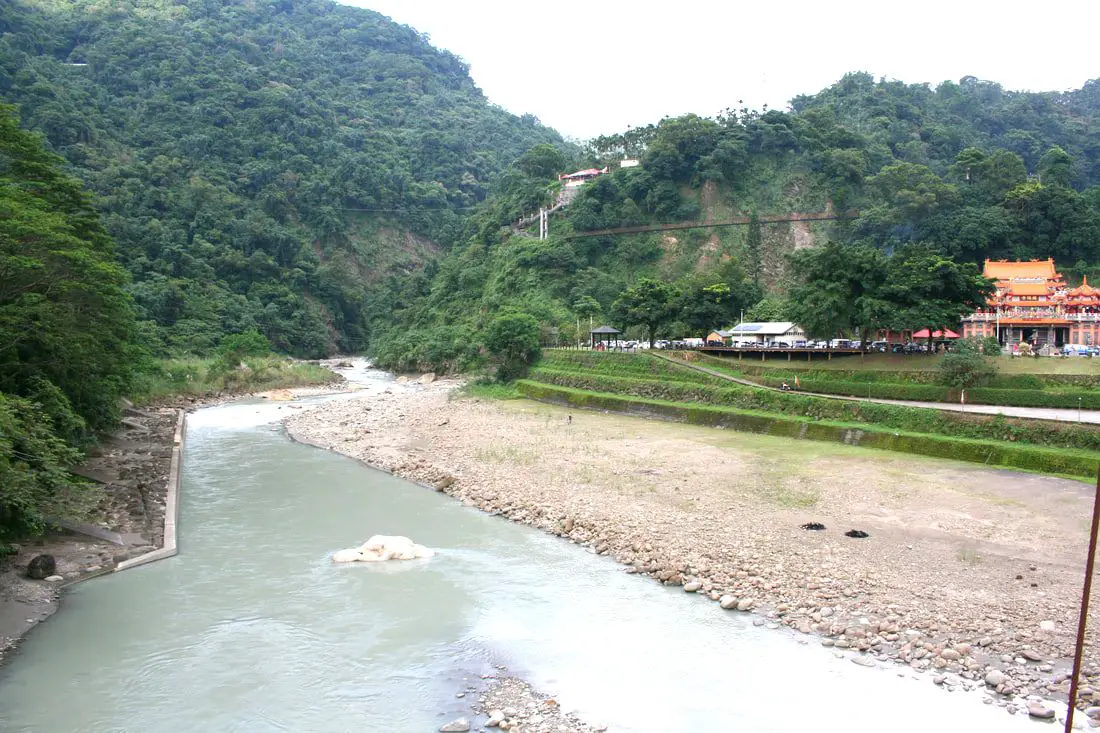
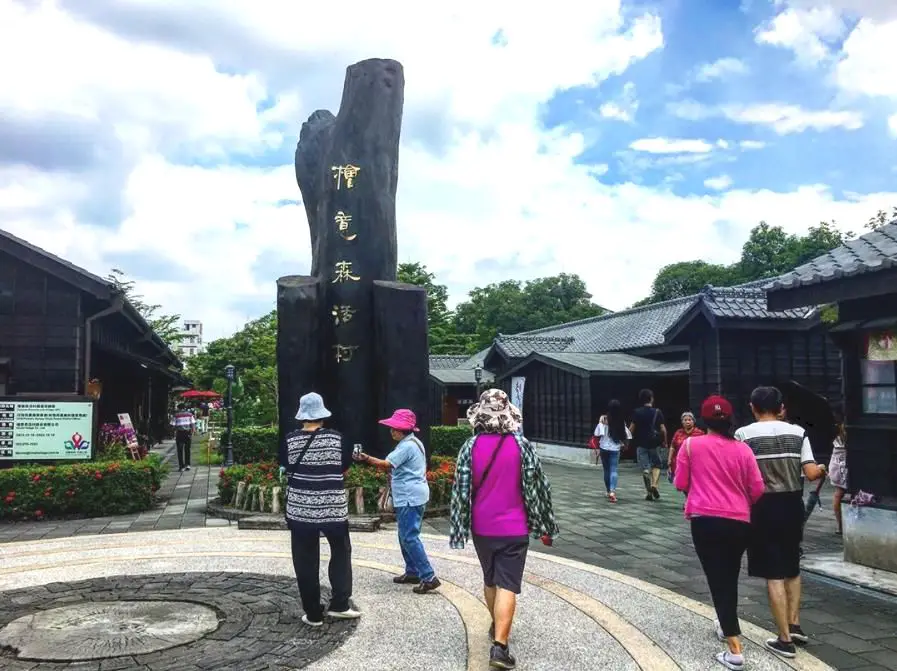

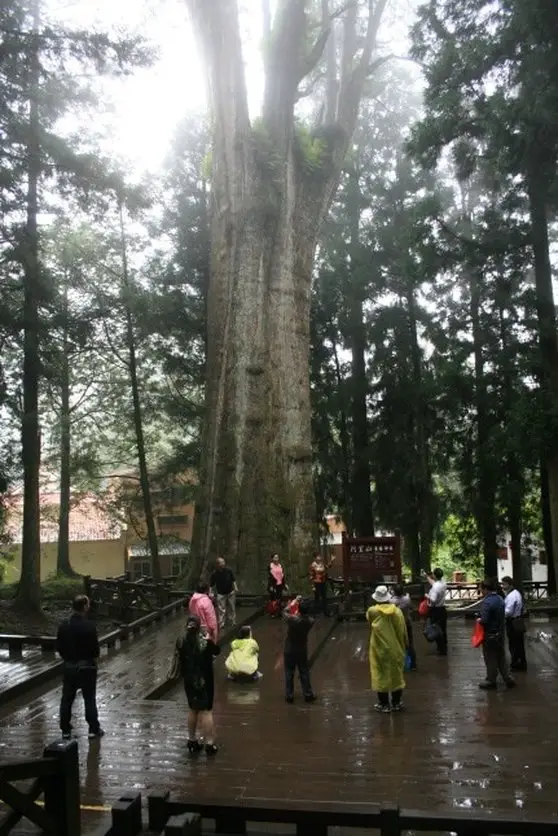
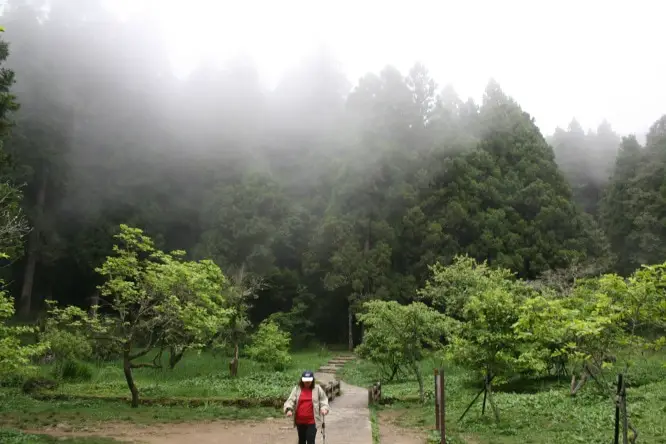
 RSS Feed
RSS Feed
